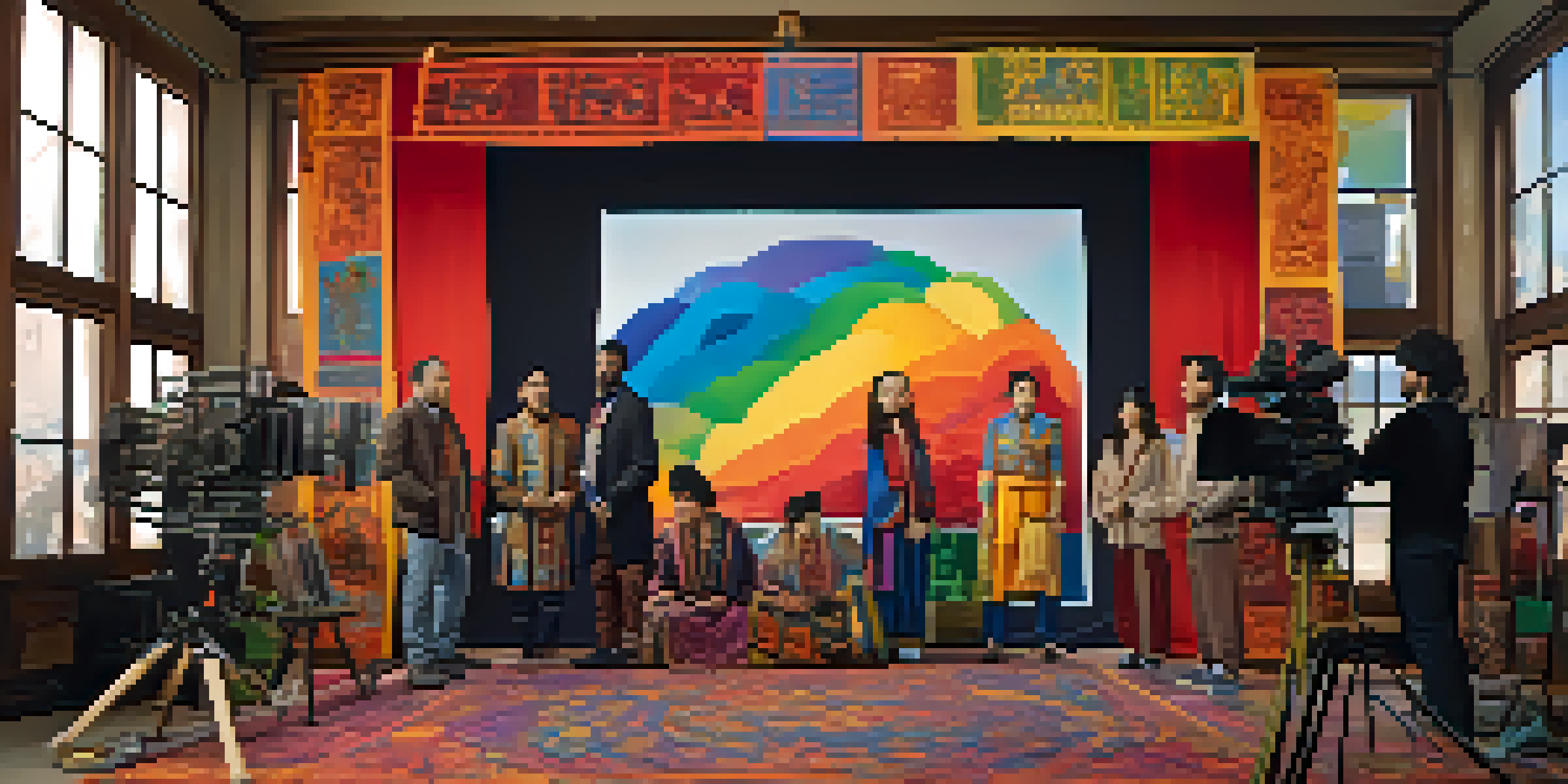Cross-Cultural Collaborations in the Global Film Industry

The Significance of Cross-Cultural Collaborations
Cross-cultural collaborations in the film industry allow filmmakers from different backgrounds to come together and create unique narratives. These partnerships enrich storytelling by blending diverse cultural elements, which can resonate with a wider audience. For example, films like 'Slumdog Millionaire' showcase the fusion of Indian culture with Western filmmaking styles, resulting in a global hit that won multiple awards.
Breaking Barriers: Language and Communication
Language can often be a barrier in cross-cultural collaborations, but it also offers an opportunity for creativity. Filmmakers may choose to incorporate multiple languages or use visual storytelling techniques to convey emotions and plot without relying solely on dialogue. A great instance of this is Pixar's 'Coco,' which beautifully weaves Spanish and English to tell a heartfelt story that honors Mexican traditions.
Diverse Cultures Enrich Storytelling
Cross-cultural collaborations in film blend various cultural elements, resulting in unique narratives that resonate with global audiences.
Diverse Perspectives: Richer Storytelling
When filmmakers from diverse backgrounds collaborate, the stories told are often richer and more nuanced. Different perspectives can shed light on issues that may be overlooked within a single cultural context. For instance, the partnership between American and South Korean filmmakers in the production of 'Parasite' brought together various social commentaries, resulting in a film that captivated audiences worldwide.
Challenges of Cross-Cultural Filmmaking
Despite the benefits, cross-cultural collaborations come with their own set of challenges. Differences in work ethics, creative visions, and cultural norms can sometimes lead to misunderstandings. It's essential for teams to foster open communication and mutual respect to navigate these challenges effectively.
Language as a Creative Opportunity
Language barriers in filmmaking can inspire creativity, leading to innovative storytelling techniques that transcend dialogue, as seen in films like 'Coco.'
The Role of Technology in Collaboration
Technology has played a crucial role in facilitating cross-cultural collaborations in the film industry. With advancements in digital communication tools, filmmakers can easily connect and collaborate, regardless of geographical barriers. Virtual meetings and cloud-based editing software have revolutionized how projects are developed, allowing for a seamless exchange of ideas and creativity.
Case Studies: Successful Cross-Cultural Films
Several films serve as prime examples of successful cross-cultural collaborations. 'The Last Samurai' combines American and Japanese filmmaking techniques to tell a compelling story about honor and tradition. Similarly, 'The Farewell' highlights the cultural differences between American and Chinese families, offering a touching portrayal of love and loss that resonates universally.
Technology Enhances Global Collaboration
Advancements in digital communication tools facilitate seamless collaboration among filmmakers across geographical borders, revolutionizing the creative process.
The Future of Global Filmmaking
As the world becomes increasingly interconnected, the future of global filmmaking looks promising. There is a growing trend of filmmakers seeking partnerships beyond their borders, leading to innovative projects that reflect a blend of cultures. This evolution not only enriches the stories told but also fosters understanding and appreciation among different audiences.
Conclusion: Embracing Diversity in Film
In conclusion, cross-cultural collaborations in the film industry offer a vibrant tapestry of storytelling that enhances our global narrative. Embracing diversity allows filmmakers to explore new ideas and perspectives, making films more relatable and impactful. As we continue to see these collaborations flourish, audiences worldwide can look forward to a richer cinematic experience.